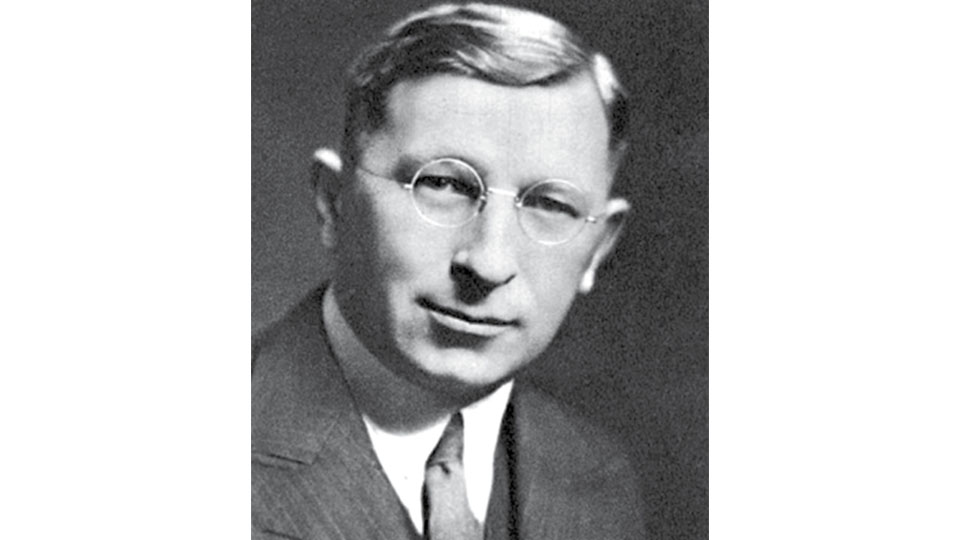By Dr. C.D. Sreenivasa Murthy
World Diabetes Day (WDD) was instituted in 1991 by the International Diabetes Federation (IDF) and the World Health Organisation (WHO) to focus on the escalating health threat posed by diabetes. World Diabetes Day became an official United Nations Day in 2006 with the passage of the United Nations Resolution. It is observed every year on 14th November, the birthday of Sir Frederick Banting, who discovered insulin along with Charles Best in 1922. Every year, the World Diabetes Day campaign focuses on a dedicated theme that runs for one or more years. The theme for World Diabetes Day 2021-23 is ‘Access to Diabetes Care.’
Chronic diabetes conditions include type 1 diabetes and type 2 diabetes. Potentially reversible diabetes conditions include prediabetes and gestational diabetes (diabetes of Pregnancy). Prediabetes happens when blood sugar levels are higher than normal, not high enough to be called diabetes. And prediabetes can lead to diabetes unless steps are taken to prevent it. Gestational diabetes happens during pregnancy. But it may go away after the baby is born.
India is known as the diabetes capital of the world, since it has been witnessing an exponential rise in incidence of diabetes. This is mainly attributed to lifestyle changes. The rapid change in dietary patterns, physical inactivity and increased body weight, especially the accumulation of abdominal fat (belly fat) are some of the primary reasons for increased prevalence.
Public health burden of diabetes
- 54 crore adults in the world were living with diabetes in 2021. This number is expected to rise to 64 crores by 2030 and 78 crores by 2045.
- Almost 1 in 2 adults (44%) with diabetes remain undiagnosed. Most of them have type 2 diabetes.
- 54 crore adults globally are at increased risk of developing type 2 diabetes.
- More than 1.2 million children and adolescents (0-19 years) live with type 1 diabetes.
- Diabetes was responsible for at least 966 billion dollars (about one lakh crore Indian rupees) in health expenditure in 2021 — 9% of the global total spend on healthcare.
- 1 in 6 live births (21 million) are affected by gestational diabetes (high blood glucose — hyperglycemia) in pregnancy.
- Millions of people with diabetes around the world do not have access to diabetes care.
- People with diabetes require ongoing care and support to manage their condition and avoid complications.
- Medicine, technologies, support and care to be made available to all people with diabetes that require them.
- Governments to increase investment in diabetes care and prevention.

The story of insulin
Before the discovery of insulin, development of diabetes in children was a death sentence. A child diagnosed to be having diabetes used to hardly live for 6 to 12 months. In 1921, a young surgeon named Frederick Banting and his assistant Charles Best figured out how to remove insulin from a dog’s pancreas. With this crude extract, Banting and Best kept another dog with severe diabetes alive for 70 days — the dog died only when no more extract was injected.
With this success, the researchers, along with the help of colleagues J.B. Collip and John Macleod, went a step further. A more refined and pure form of insulin was developed, this time from the pancreases of cattle. In January 1922, Leonard Thompson, a 14-year-old boy dying from diabetes in a Toronto hospital, became the first person to receive an injection of insulin. Within 24 hours, Leonard’s dangerously high blood glucose levels dropped to near-normal levels and he recovered.
On 23rd January 1923, Banting, Collip and Best were awarded US patents on insulin and the process used to make it. They all sold these patents to the University of Toronto for ONE DOLLAR. Banting famously said, “Insulin does not belong to me, it belongs to the world.” He wanted everyone who needed it to have access to it, and live a near healthy life.
Insulin is one of the greatest and epoch-making discoveries in the history of medicine. In 1923, Banting and Macleod received the Nobel Prize in Medicine, which they shared with Best and Collip. Soon after, drug firms started large-scale production of insulin, and there was enough insulin to supply the entire world. In the last century since the discovery of Insulin, manufacturers have developed a variety of slower-acting insulins.
Insulin from cattle and pigs was used for many years to treat diabetes and saved millions of lives, but it wasn’t perfect, as it caused allergic reactions in many patients. The first genetically engineered, synthetic “human” insulin was produced in 1978 using E. coli bacteria to produce the insulin. Insulin now comes in many forms, from regular human insulin identical to what the body produces on its own, to ultra-rapid and ultra-long-acting insulins.
Thanks to past ten decades of research, people with diabetes can choose from a variety of formulas and ways to take their insulin based on their personal needs and lifestyles.
From Insulin syringes and insulin pens to pumps, insulin has come a long way. It may not be a cure for diabetes, but it’s a life-saver which has helped diabetics overcome acute diabetic emergencies, reduce the severe long-term complications and live longer healthy years.
Long-term complications of diabetes
These develop gradually. The longer the duration of diabetes — and poorly controlled blood sugar — higher the risk of complications. Eventually, diabetes complications may be disabling or even life-threatening.
- Heart and blood vessel (cardiovascular) disease and strokes. Diabetes majorly increases the risk of many heart problems. These can include coronary artery disease with chest pain (angina), heart attack, stroke (paralysis). These are the result of narrowing of arteries (atherosclerosis).
- Nerve damage (neuropathy). Too high blood sugar can injure the walls of the tiny blood vessels (capillaries) that nourish the nerves, especially in the legs. This can cause tingling, numbness, burning or pain in the feet. Damage to the nerves related to digestion can cause problems with nausea, vomiting, diarrhoea or constipation. For men, nerve damage may lead to erectile dysfunction.
- Kidney damage (nephropathy). The kidneys hold millions of tiny blood vessel clusters (glomeruli) that filter waste from the blood. Diabetes can damage this delicate filtering system and lead to kidney failure. In the United States, diabetes and high blood pressure are the leading causes of kidney failure, accounting for 3 out of 4 new cases.
- Eye damage (retinopathy). Diabetes can damage the blood vessels of the eye (diabetic retinopathy). This could lead to blindness.
- Foot damage. Nerve damage in the feet or poor blood flow to the feet increases the risk of many foot complications, many times leading to amputation of toes; feet or legs.
- Skin conditions. Badly controlled diabetes patients are more prone to skin problems, including bacterial and fungal infections.
- Hearing impairment. Hearing problems are more common in people with diabetes.
- Alzheimer’s disease. Type 2 diabetes when uncontrolled may increase the risk of dementia, such as Alzheimer’s disease.
Can diabetes be prevented?
Diabetes can’t be prevented in type 1 diabetes. But healthy lifestyle choices can prevent or delay the onset of prediabetes, type 2 diabetes and gestational diabetes (diabetes of pregnancy).
- Eat healthy foods. Choose foods lower in fat and calories and higher in fibre. Focus on fruits, vegetables and whole grains. Eat a variety to prevent monotony.
- Get more physical activity. About 30 minutes of moderate aerobic activity on most days of the week, or about 150 minutes of moderate aerobic activity a week.
- Lose excess weight. If overweight, losing even 7% of the body weight can lower the risk of diabetes. To keep the weight in a healthy range, work on long-term changes in eating and exercise habits. The benefits of losing weight are a healthier heart, more energy and higher self-esteem.
- Sometimes drugs are an option. Oral diabetes drugs such as metformin and other newer drugs may lower the risk of type 2 diabetes. But healthy lifestyle choices are important.
To prevent diabetes, ALWAYS EAT LESS AND WALK MORE








The story of Banting and best is well known, and was in my textbook, decades ago.
This fool , who is a doctor, should understand, in India, the cause of type-2 diabetes is wrong food and lack of exercise, as Indians and Mysoreans love their petrol vehicles.
Unfortunate Indians with diabetes have to fork out a fortune every week to get their tablets and insulin vials, as the healthcare is not free in India. For example, in European countries those with diabetes get free medicine -not only related to diabetes but other diseases too.
Third world India, where the corrupt thrive and others have to suffer and die. Even if these poor souls have to sell their valuables and get their treatment for diabetes, it is often wrong and inadequate-they lose their valubles, get bankrupt and die.